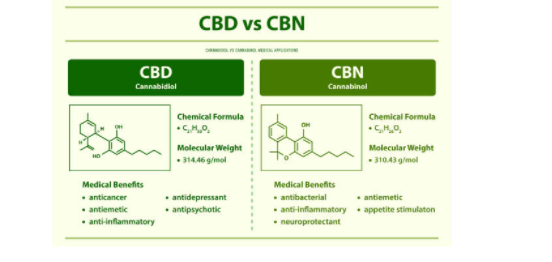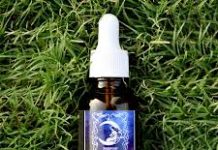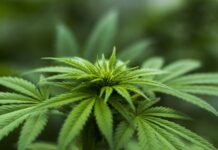Cannabis refers to a group of three plants Cannabis sativa, Cannabis indica, and Cannabis ruderalis, all of them having psychoactive properties. Cannabis plants are complex, unique, and incredibly diverse from strain to strain. Cannabis has more than 400 distinct chemical compounds such as cannabidiol (CBD) and delta-9-tetrahydrocannabinol (THC). One must note that cannabis is considered natural as it comes from plants, and it can have substantial positive and negative effects.
Let’s learn about cannabis and the other essential compounds present in it. Out of the 400 compounds present in cannabis plants, more than eighty are classified as phytocannabinoids, which come from a plant, unlike synthetic cannabinoids. Each of these phytocannabinoid produces different effects.
Delta-9 Tetrahydrocannabinol (THC)
THC is the most widely known cannabinoid. It is present in high concentrations in most marijuana strains. Both delta-8 THC and delta-10 THC are analogs of delta-9 THC and belong to the family of “tetrahydrocannabinol” alongside THCA, THCV, and THCP. Delta-8 is recognized as 50-66% potent as delta-9, while delta-10 is considerably less potent (about 20-30% less than delta-8).
THC’s psychoactive properties cause a “high” feeling. THC offers multip0le benefits, and some of them are as follows:
- Euphoria
- Amplified senses
- Relaxation
- Relief from pain
- Prevention of damage to the nerves
- Appetite stimulation
- Anti-inflammatory
- Improved sense of well-being
- Increased creativity
- Antispasmodic, minimizing spasms and convulsions
- Minimization of vomiting and nausea
- Antioxidant, fighting free radicals in the body
- Promotes the growth of new brain cells
- Protects brain cells from damage
Cannabidiol (CBD)
The non-psychoactive compound CBD balances the effects of THC with several medical benefits. Several medical marijuana users prefers to buy cbd products online from canada to treat their symptoms. The strains offer higher CBD content because of the minimized feelings of euphoria in strains offering higher CBD content.
Some of the plus points of CBD are as follows;
- Balances/reduce THC’s adverse effects
- Anti-inflammatory properties
- Neuron protection against injury and degeneration
- Mood uplift and improvement
- Relief from pain
- Antipsychotic characteristics
- Antispasmodic
- Decreased appetite
Tetrahydrocannabinolic Acid (THC-A)
THC-A has several benefits as an anti-inflammatory and neuro-protectant agent. THC starts in the cannabis plant as a non-psychoactive acidic compound THC-A. Moreover, THC-A converts to THC when it is heated. When marijuana is heated during the decarboxylation process, chemical reactions occur and transform THC-A into THC.
Tetrahydrocannabivarin (THCV)
Although THCV’s molecular structure and psychoactive properties are very similar to THC’s, different effects are produced. THCV is an appetite suppressant. It can regulate blood sugar levels, stimulate the growth of bones, and reduce anxiety. THCV also improves motor control, tremors, and brain lesions related to Alzheimer’s disease. THCV is rare in most strains but abundant in African sativas such as Pineapple Purps, Durban Poison, and Willie Nelson.
Cannabinol (CBN)
When THC is exposed to air, CBN is created. This is the primary reason why many patients store their marijuana in air-tight sealed containers to maintain THC. CBN is psychoactive similar to THC, with the difference that it is at much lower levels. Although CBN is a psychoactive cannabinoid, it causes little to no psychoactive effects. Marijuana products have less than 1% of CBN content. CBN is believed to have the ability to fight insomnia or sleep disorders. It can offer similar effects to pharmaceutical sedatives in smaller doses. Some of the benefits offered by Cannabinol (CBN) are as follows:
- It stimulates appetite
- Aids in sleep
- Regulation of immune system
- Effectiveness against antibiotic-resistant strains of MRSA infections
- Relief from pain
- Reduction of intraocular pressure
- Anti-inflammatory agent
- Antispasmodic and anti-convulsant
- Supports bone cell growth
- Antioxidant, fighting free radicals in the body
- Cannabigerol (CBG)
CBG is non-psychoactive and forms a foundation for CBD and THC. CBG is formed early in the growth cycle of the plant. It is not found in large quantities with the maturity of the plant. Many users have claimed that strains with higher CBG content can minimize the adverse effects of THC. Thank fully you can order mimosa strain now. The primary role of CBG is to synthesize other types of cannabinoids due it is also known as the mother of all cannabinoids. It offers the following plus points:
- Possible anti-tumor effects
- Relief of intraocular pressure
- Antibiotic effects
- Antifungal effects
- Pain relief
- Antioxidant, fighting free radicals in the body
- Antidepressant
- Mood regulation
- Anti-inflammatory
Cannabichromene (CBC)
The second most available cannabinoid in marijuana is CBC, with THC being the first one. It is a non-psychoactive cannabinoid. Like other cannabinoids, Cannabichromene offers the following benefits:
- Anti-inflammatory in the intestinal tract
- Encourages the growth of new brain cells
- Anti-tumor effects
- Antidepressant
- Mild antifungal
- Antibacterial against E. coli, staph infections, etc.
- Relief from pain, although not very significant as other cannabinoids.
Conclusion
All the individual cannabinoids have their unique strengths, and you may opt for them selectively as per your needs. The disadvantage of taking them individually is that few of them are more expensive than the others, as extra efforts are required to extract them. However, when some of them are combined, you get to enjoy their multi-fold positive effects. Different strains have different chemical profiles, thereby causing different experiences in the same person. Each strain has a unique profile of hundreds of cannabinoids and terpenes, which come together to produce the plant’s effects.
































